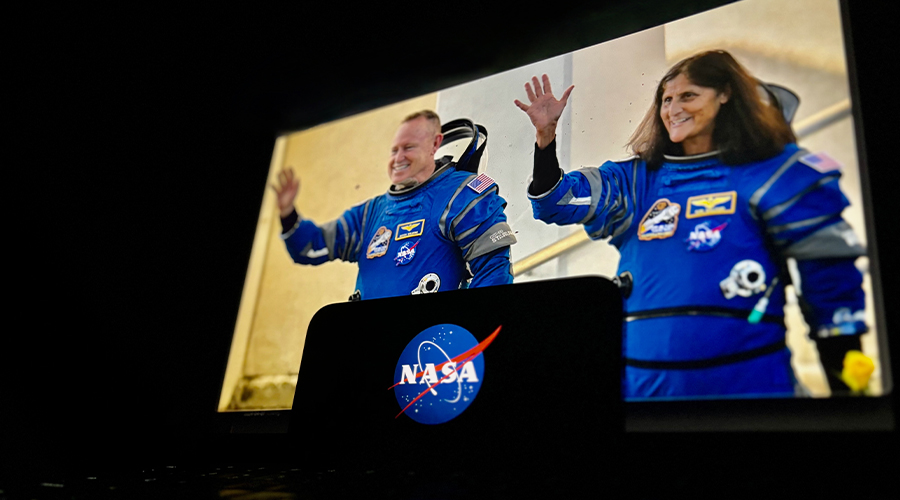

The astronauts of the National Aeronautics and Space Administration (NASA) have always made the world proud with their findings on Space and scientific research. But this time, the astronauts Sunita Williams and Barry ‘Butch’ Wilmore got stranded in Space, not for days or weeks, but for 9 months. Their mission was supposed to last just a week but the propulsion issues in their Boeing’s Starliner spacecraft halted their return to Earth.
Due to isolation, radiation, and microgravity, there might have occurred various physiological and psychological changes in their body, affecting their overall health. This blog gives you insights about what health issues the astronauts must be facing as per the experts.
Health Issues Anticipated for Sunita Williams and Butch Wilmore
Since Williams and Wilmore have reached the International Space Station (ISS), they are all set to make their return to Earth. Here are the following health conditions that these astronauts may encounter:
1. Muscle Atrophy
In Space, astronauts experience weightlessness. Thus, their muscles lose their ability to bear weight as they do on Earth. It may lead to muscle atrophy in the back, legs, and neck muscles. Muscle atrophy can be defined as the loss of skeletal muscle mass or thinning of the muscle mass. It may lead to muscle weakness, fatigue, poor balance, difficulty in performing regular activities, and even tough to stand or walk on their own as they enter gravity again.
2. Bone Loss
If astronauts spend more time in Space, there is up to 1% bone density loss every month. With this, their body strength also depletes. It happens because their body fails to take support/weight-bearing from the legs, hips, and spine in Space. It can increase their chances of bone fractures.
3. Dizziness
In microgravity, astronauts’ bodies go into a weightlessness zone, which temporarily shifts the blood flow to the chest and head. It temporarily turns their face puffy. Moreover, their legs shrink due to fluid redistribution.
4. Vision Issues
On the cosmic adventure, astronauts Williams and Wilmore might experience a difference in their eyesight. Since the fluid movement is disturbed and goes inside the skull, it can cause swelling at the back of their eyes, leading to vision impairment.
5. Baby Feet
In microgravity, the skin and feet of the astronauts can feel soft like babies. That’s why this condition is called baby feet. Also, as they relearn walking, they may feel pain and quirky challenges in getting back to normal life.
6. Cancer Risk
Experts have stated/warned about an increased risk of cancer as the astronauts have been exposed to 100 times higher radiation than Earth. It can pose long-term health risks, which include a risk of cancer. Moreover, their impact may be irreversible.
7. Psychological Changes
The journey from Space to Earth won’t just bring physical changes, but also psychological changes. They might find difficulty in adapting to Earth’s sensory overload and keeping up with daily routines. It can mark a significant impact on their mental health.
Tests Done for Astronauts on Longer Missions in Space
When astronauts leave for Space for a longer period of time, they go through some tests to evaluate their health. Sunita Williams and Wilmore might undergo these examinations:
- Physical examination for whole body check.
- Height and weight are measured.
- Mobility test, pilot field test, and dynamic post-urography – These tests are done to assess the ability of astronauts under varying sensory conditions and how they perform.
- An ocular assessment for vision check and colour sensitivity is done.
- An audiometry test to check your hearing ability is conducted.
- Cardiorespiratory test to check the functioning of the heart and lungs.
- Nutritional checks for overall health.
- A radiation test to see the effects of radiations on your body is performed.
- Dental examinations for oral health.
- Quality of sleep is tested.
Apart from these, astronauts are kept under supervision in a well-established environment to help them recover and lead a healthy life.
Wrapping Up
Those who make the cut stand out in the crowd and NASA astronauts, Sunita Williams and Butch Wilmore are two such brave hearts. They survived for 9 months on a spacecraft.
The world is waiting for their imminent return to Earth from the ISS. Amidst this wave of happiness, experts are doubting serious health concerns to them. Due to long exposure to radiation, zero gravity, and no social interactions, both of them might experience many physiological and psychological changes. It may be baby feet, loss of muscle and bone density, and impact on brain health.
Professionals may figure out the muscle atrophy causes, radiation effects and run a complete physical examination program to check on their health and help them get back to normal life.




